While Estonia has plenty of what you would consider “regular graveyards”, they also believe in making cemeteries public spaces. Many of their cemeteries actually double as parks. What makes the Metsakalmitsu such a draw is that unlike Kalamaja kalmistu which was completely flattened, or Raadi kalmistu, which is no longer active, Metsakalmitsu is in use to this day.
Metsakalmistu (literally: forest cemetery) is a blend of walking park, preservation of the existing wooded area, graveyard, a return to nature, and an eschewing of big monuments for the dead. Located in Pirita, about 8km outside of downtown Tallinn, it was established in 1933 and opened to the public in 1939. At 48.3 ha (or 119.4 acres) it’s no slouch of size but it’s not even the largest graveyard in Haajumaa, as Pärnamäe kalmist is twice the size!
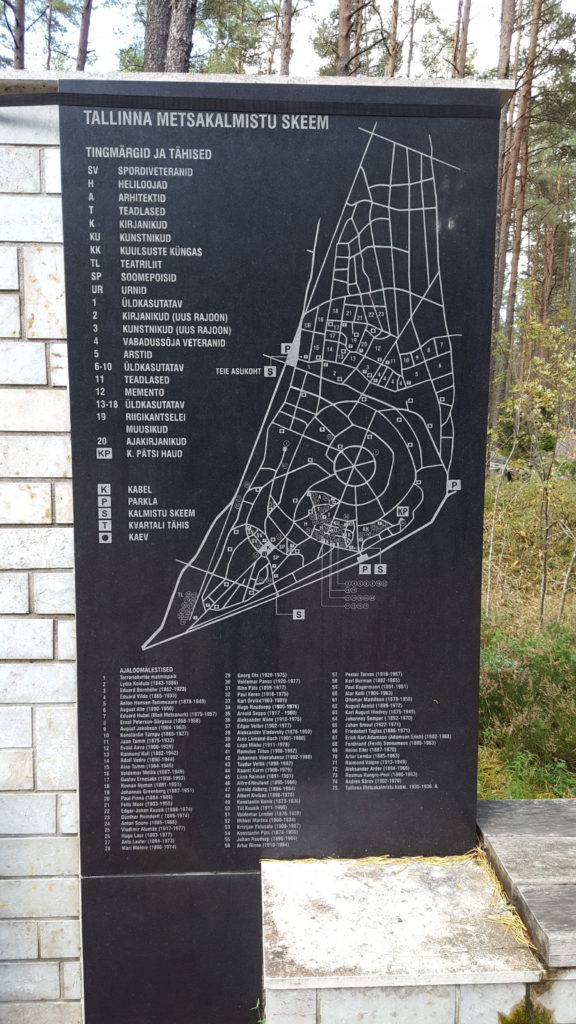 According to this map I barely got a quarter of the way through after an hour of walking.
According to this map I barely got a quarter of the way through after an hour of walking.
When you enter the park you might not even notice that it’s a graveyard right away. Many of the grave markers are low to the ground and fairly unobtrusive and isolated such that you wouldn’t notice unless you were looking.
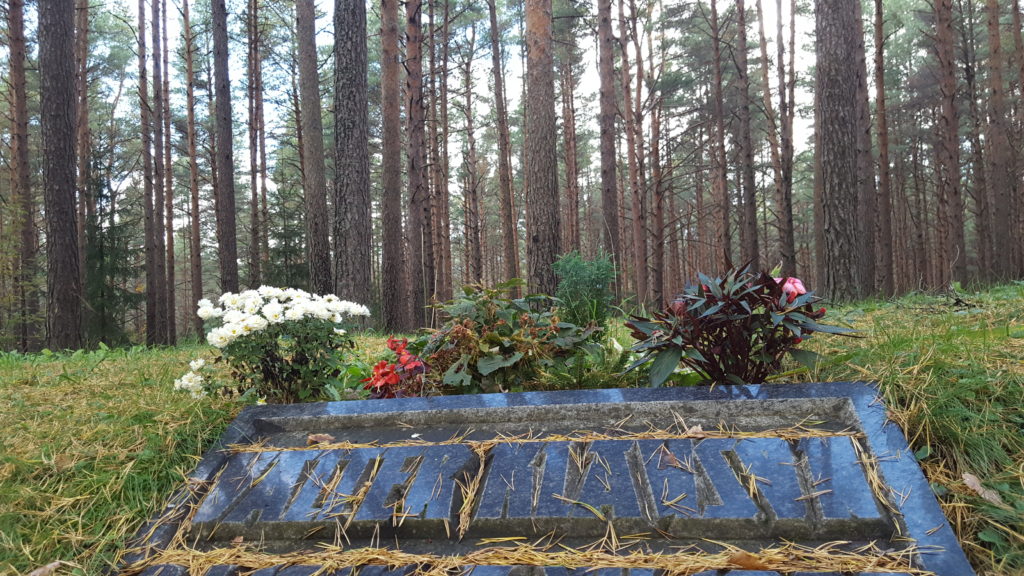 The grave marker here was so low I’m sitting on the ground to take a picture of it, the flowers were more conspicuous than the grave itself.
The grave marker here was so low I’m sitting on the ground to take a picture of it, the flowers were more conspicuous than the grave itself.
The edges are the park are fairly empty and remain more forest looking: your standard trees, water, etc. but as you head towards the center things become more interesting.
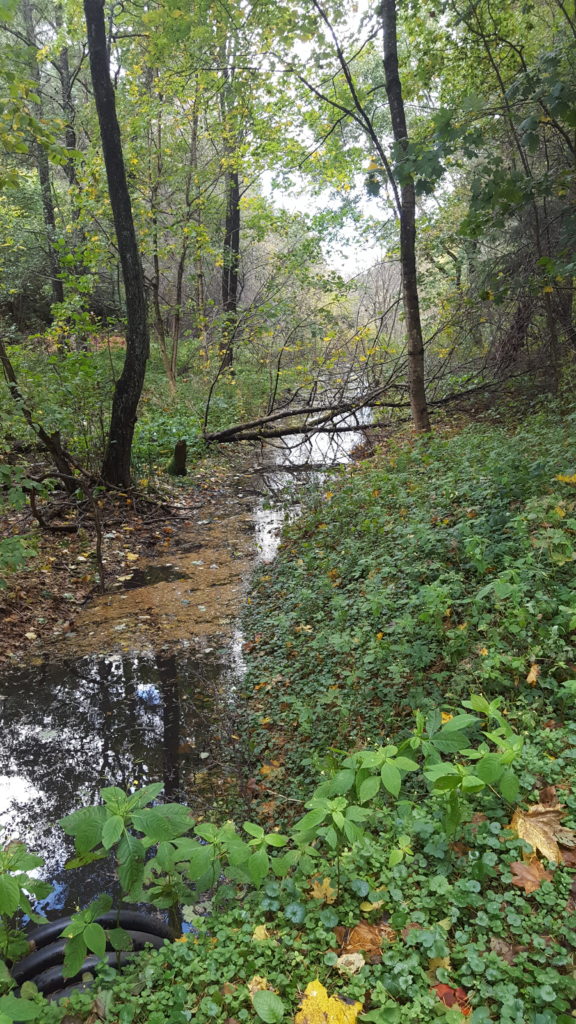 This is the entrance near the Kloostrimetsa bus stop.
This is the entrance near the Kloostrimetsa bus stop.
While individual grave sites can only be a certain very small height and width (80×50 cm), there are a few exceptions including this memorial to the Jewish people killed during the Nazi era. Other monuments include a thanking of Estonian soldiers who passed in war, and a special area dedicated to Estonia’s first president and his family.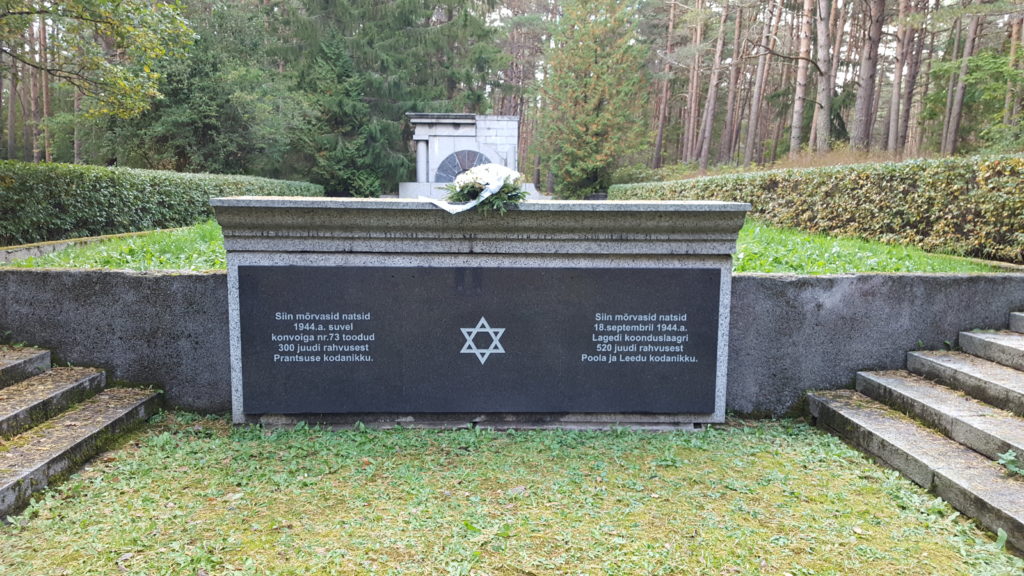 I don’t think bodies are buried in there but I walked around the outside out of respect.
I don’t think bodies are buried in there but I walked around the outside out of respect.
The majority of graves seemed to be non religious but you could find plenty Star of Davids, crosses, Om symbols, and even Ankhs. Graves are required to be surrounded by plants, natural lawn edges, covered with moss mat, or bordered with flowers to blend in with the forest itself to keep the aesthetic.
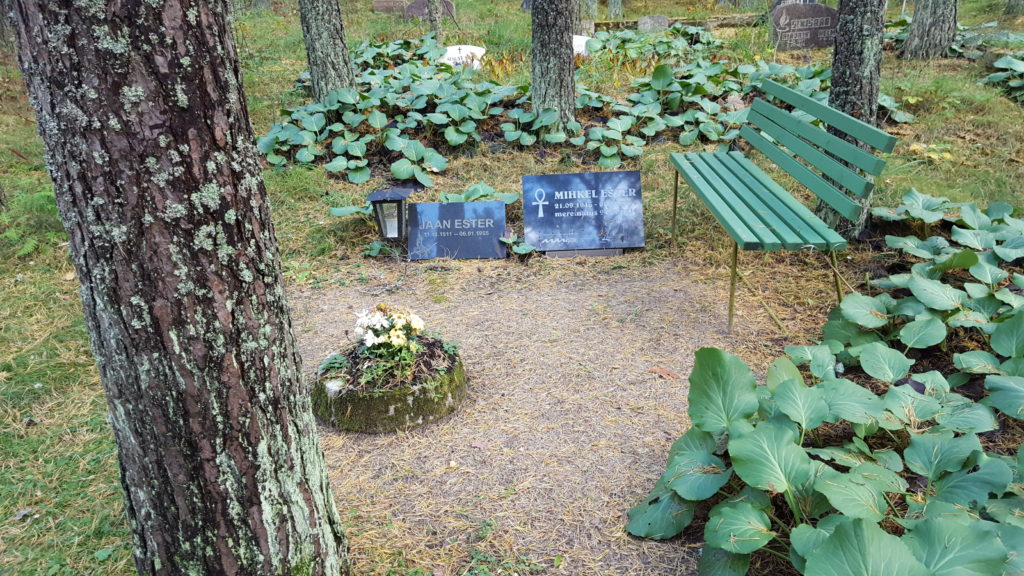 Many graves had benches, water wells, and even small trash cans next to them so that it looked more like a park than a cemetary.
Many graves had benches, water wells, and even small trash cans next to them so that it looked more like a park than a cemetary.
The only building in the park is a limestone chapel, which is actually a rebuild of the original chapel as that was burned down in 1996.
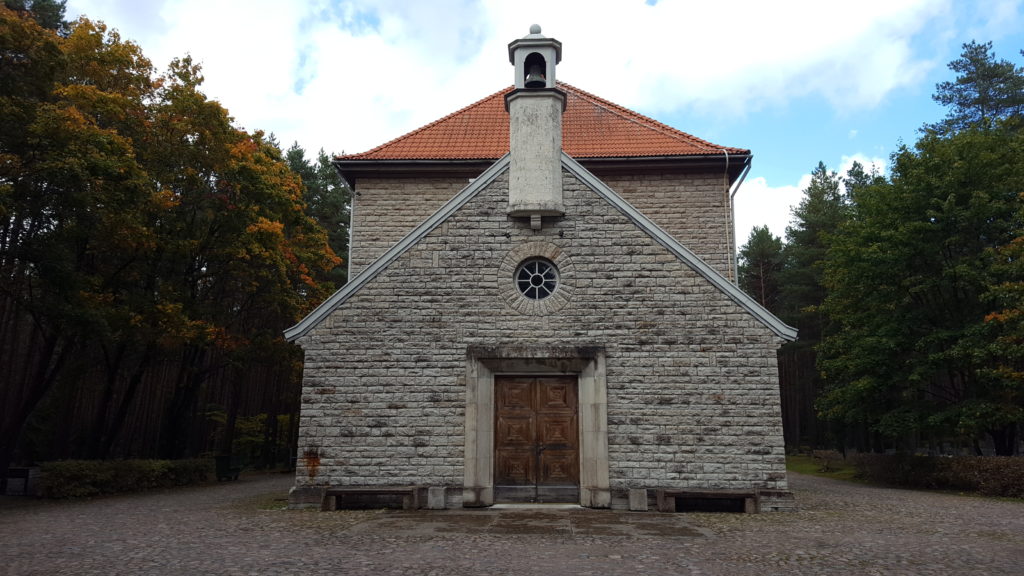 This building is one of the few land markers I was able to find. Go me!
This building is one of the few land markers I was able to find. Go me!
Despite the layout, many areas had graves that were lined up and densely packed, which gave them a look closer to American graveyards (save for the trees everywhere).
 I believe these were the Finnish citizen graves, possibly from WWII.
I believe these were the Finnish citizen graves, possibly from WWII.
Still more had graves seemed to have been placed in random locations. Some graves did not face the trails and pathways through the woods. Many graves were strangely back to back with each other, or placed diagonally instead of in a neat line like you’d expect.
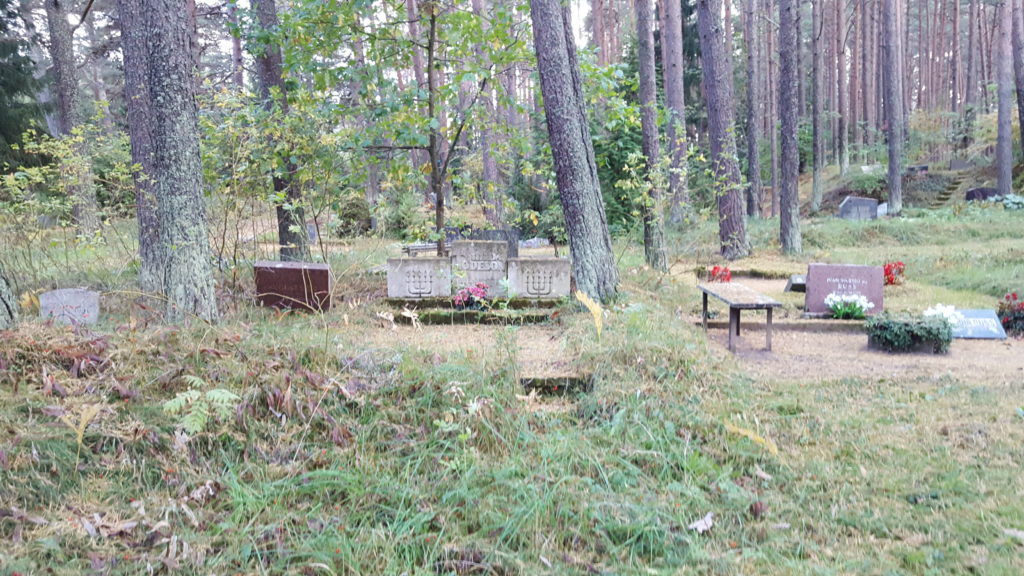 You can see some grave stairs on the right side, they led to a raised stone.
You can see some grave stairs on the right side, they led to a raised stone.
Some graves were placed up on the soft slopes of hills, usually with small off-road, moss covered stairs leading to them. Once you got a certain amount into the cemetery it was impossible to look in any direction and not see at least a smattering of graves.
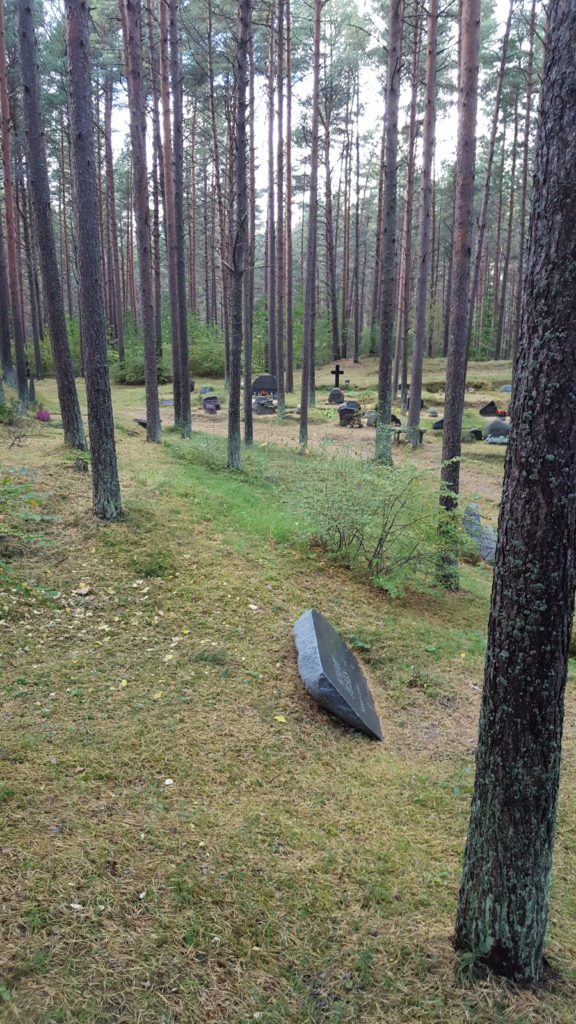 The trees are so tall and thin but somehow its hard to see far.
The trees are so tall and thin but somehow its hard to see far.
Larger moss covered stairs led to lookouts and important grave sites. Graves were often divided in area by profession or ethnicity as well.
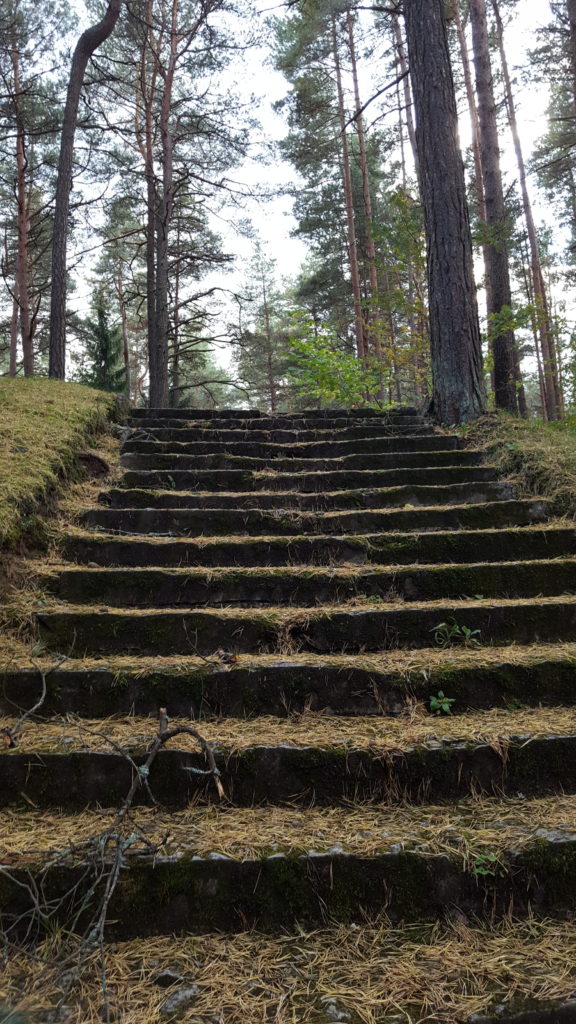 I believe these stairs led to the Estonian Presidents grave
I believe these stairs led to the Estonian Presidents grave
Despite the tall trees giving the feeling the graveyard has been there forever, this is a surprisingly modern graveyard for Europe, being less than 100 years old. Many graves were younger than a decade and actively tended by the living with flowers and candles. I saw over a dozen people coming to pay respects and two openly dug graves.
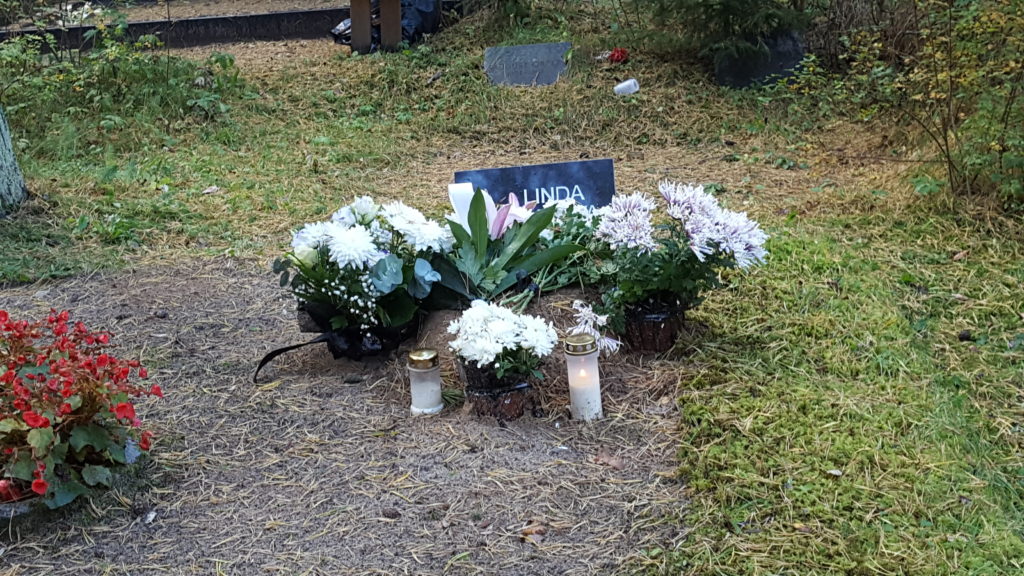 One of dozens of candles I saw clearly just lit, they sell these lights in most grocery stores.
One of dozens of candles I saw clearly just lit, they sell these lights in most grocery stores.
The graveyard is closed to the public at night so if you were hoping to get spooky in the dark here, it’s strictly forbidden but the graveyards hours are 9:00-16:00 Monday-Friday meaning on certain days in the darkest part of winter you can easily see the sun rise and be in the cemetery beyond sunset though I wouldn’t suggest it as it’s fairly easy to get lost and a lack of land markers make navigation quite interesting.
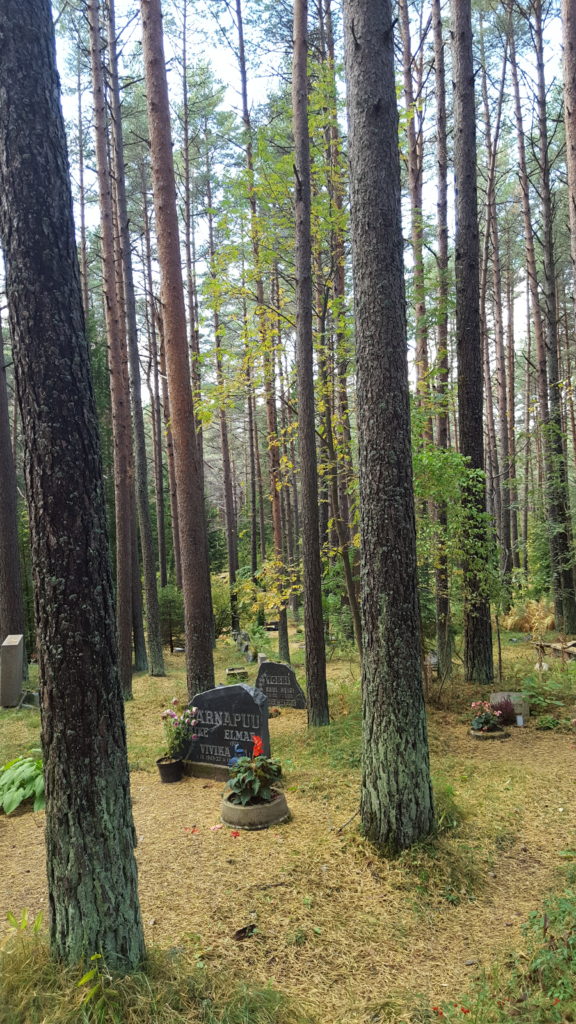 Graves also came in a variety of languages, though most are in Estonian and Russian.
Graves also came in a variety of languages, though most are in Estonian and Russian.
A special note is that you may want to visit on Hingedepäev (All Souls Day, which is 2nd November) if at all possible as on that day Estonians come and place candles at the graves. With so many graves in the forest, it’s sure to be a sight. If you have a picnic in the graveyard on that day, be sure to bring extra food for the dead!
You can visit the Metsakalmitsu at Kloostrimetsa tee 36, 11913 Tallinn. Check out their website for directions, hours, and more information. Also you can learn more about Estonia’s grave sites and even look up specific graves in Estonia at the Kalmistute Register.
